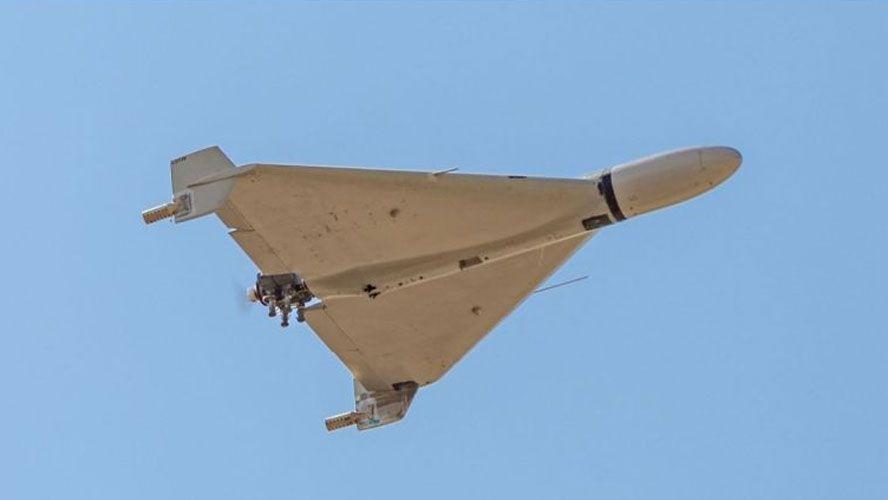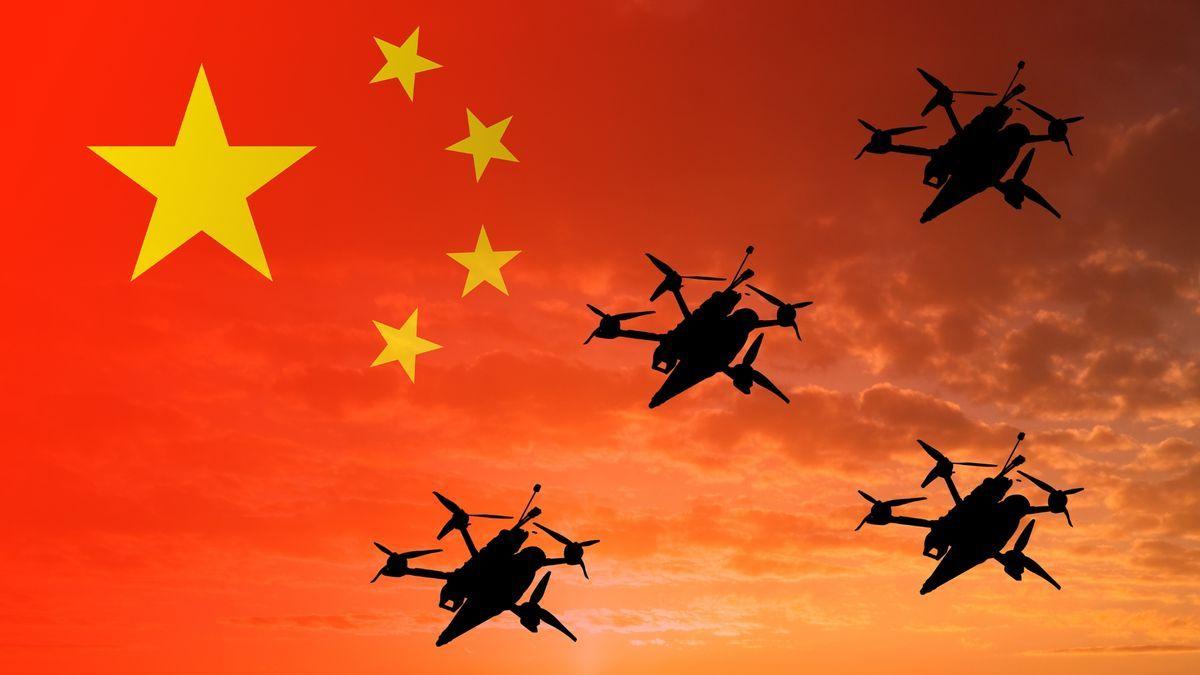Russia Field-Tests Advanced AI Drone Powered by Nvidia Jetson Orin in Ukraine
3 Sources
3 Sources
[1]
Russia allegedly field-testing deadly next-gen AI drone powered by Nvidia Jetson Orin -- Ukrainian military official says Shahed MS001 is a 'digital predator' that identifies targets on its own
Uses Nvidia AI as it 'sees, analyzes, decides, and strikes without external commands.' Ukrainian Major General Vladyslav (Владислав Клочков) Klochkov says Russia is field-testing a deadly new drone that can use AI and thermal vision to think on its own, identifying targets without coordinates and bypassing most air defense systems. According to the senior military figure, inside you will find the Nvidia Jetson Orin, which has enabled the MS001 to become "an autonomous combat platform that sees, analyzes, decides, and strikes without external commands." With the Jetson Orin as its brain, the upgraded MS001 drone doesn't just follow prescribed coordinates, like some hyper-accurate doodle bug. It actually thinks. "It identifies targets, selects the highest-value one, adjusts its trajectory, and adapts to changes -- even in the face of GPS jamming or target maneuvers," says Klochkov. "This is not a loitering munition. It is a digital predator." Even worse, the MS001 is allegedly operating in coordinated drone groups, persisting in its maximum destructive purpose despite the best efforts of Ukraine's electronic warfare and other anti-drone systems. Klochkov signs off his post by informing his LinkedIn followers that "We are not only fighting Russia. We are fighting inertia." What he appears to wish for is an acceleration of Ukraine's own assault drone capabilities. The Major General seems particularly disappointed in the Ukrainian system of procurement rounds, slowing field-testing and deployment of improved responses to new Shahed drone generations. Shahed drones are originally an Iranian design but have gained great notoriety due to their sustained use by the Russian army to attack Ukrainian targets. The MS001 is substantially upgraded in the 'smarts' department thanks to Western/allies technologies. Klochkov says the MS001 is powered by the following key technologies: Western tech sanctions are supposed to neuter this kind of military threat from nations like Russia and Iran. This news indicates that such trade barriers are leaky, at best, and probably not taken seriously enough. This isn't the first Russian drone system that is thought to have adopted Nvidia's Jetson Orin as a key component. A month ago, Ukraine's Defense Express site said that a new "smart suicide attack unmanned aerial vehicle with artificial intelligence," dubbed the V2U, was powered by Nvidia's little AI computer. While the Shahed MS001s use an Iranian design, the V2U looks like it is more reliant on Chinese tech, including the Chinese-made Leetop A603 carrier board.
[2]
Russia field-testing new AI drone powered by Nvidia's Jetson Orin supercomputer
Serving tech enthusiasts for over 25 years. TechSpot means tech analysis and advice you can trust. In a nutshell: There have been plenty of stories about the US using AI to create a new generation of autonomous weapons, but other countries are doing the same thing. One of these is Russia, which is said to be using a drone powered by Nvidia's Jetson Orin supercomputer. Russia is using the self-piloting abilities of AI in its new MS001 drone that is currently being field-tested. Ukrainian Major General Vladyslav Klochkov wrote in a LinkedIn post that MS001 is able to see, analyze, decide, and strike without external commands. It also boasts thermal vision, real-time telemetry, and can operate as part of a swarm. The drone's AI smarts come via a Jetson Orin, a $249 palm-sized generative AI supercomputer that the company revealed last December. It features 67 INT8 TOPS (trillion operations per second) and 102 GB/s memory bandwidth. At its core is an Nvidia Ampere architecture GPU with tensor cores, paired with a 6-core Arm CPU. The MS001 doesn't need coordinates; it is able to take independent actions as if someone was controlling the UAV. The drone is able to identify targets, select the highest priorities, and adjust its trajectories. Even GPS jamming and target maneuvers can prove ineffective. "It is a digital predator," Klochkov warned. In addition to the Jetson Orin, the remains of MS001 that was shot down last month revealed a thermal imager for night/low-visibility operations, Nasir GPS with CRPA antenna for spoof-proof navigation, FPGA chips for onboard adaptive logic, and a radio modem for telemetry and swarm communication. The MS001 design is a variant of the Iranian-designed Shahed drones. A similar new Russian UAV, dubbed the V2U, was recently discovered to also be powered by the Jetson Orin, which was inserted into a Chinese-made Leetop A603 carrier board. That drone is described as a smart suicide attack unmanned aerial vehicle with artificial intelligence. Since early 2022, the US has effectively banned advanced-chip exports to Russia and blacklisted hundreds of Russian buyers. Yet battlefield tear-downs still reveal team Green's technology: smugglers re-label it as consumer gadgets and forward small parcels through shell companies in Hong Kong, China, Singapore, and Turkey. US investigators estimate about $17 million in Nvidia hardware slipped through these grey-market routes in 2023 - evidence that diversion networks keep the chips flowing despite sanctions. AI drones are becoming an increasingly popular weapon in theaters of war. Palmer Luckey's Anduril Industries last year unveiled new AI-powered kamikaze drones. The technology is also being used to create autonomous jets, with the US Air Force successfully testing the dogfighting capabilities of these vehicles against human pilots.
[3]
Russian drone hunts like a predator with Nvidia supercomputer's help
Russia tests Nvidia-powered killer drone that hunts targets autonomously. In June 2025, Ukrainian air defense units intercepted what initially appeared to be a standard Shahed-136 drone over the Sumy region. Upon closer examination, however, the platform revealed itself as far more advanced, Russia's MS001, an autonomous unmanned aerial vehicle (UAV) integrating artificial intelligence, hardened navigation systems, and real-time targeting logic. Ukrainian Major General Vladyslav Klochkov said in a LinkedIn post that this was not simply a drone. It was a turning point in modern warfare. "This is a digital predator," he warned. "It doesn't carry coordinates, it thinks."
Share
Share
Copy Link
Russia is allegedly testing a new autonomous AI-powered drone, the MS001, in Ukraine. The drone, equipped with Nvidia's Jetson Orin supercomputer, can independently identify and strike targets without external commands.
Russia's Advanced AI Drone: A New Threat in Modern Warfare
In a significant development in the ongoing conflict between Russia and Ukraine, reports have emerged of Russia field-testing a highly advanced autonomous drone powered by artificial intelligence. The drone, identified as the MS001, represents a leap forward in unmanned aerial vehicle (UAV) technology and raises serious concerns about the future of warfare and the effectiveness of international tech sanctions
1
2
.The MS001: A "Digital Predator"
Ukrainian Major General Vladyslav Klochkov has described the MS001 as a "digital predator" that can "see, analyze, decide, and strike without external commands"
1
. This autonomous combat platform is reportedly equipped with:
Source: Tom's Hardware
- Nvidia Jetson Orin: A palm-sized AI supercomputer that serves as the drone's brain
2
. - Thermal imaging capabilities for night and low-visibility operations
1
. - Nasir GPS with CRPA antenna for spoof-proof navigation
1
. - FPGA chips for onboard adaptive logic
1
. - Radio modem for telemetry and swarm communication
1
.
The MS001 is said to be an upgrade of the Iranian-designed Shahed drones, which have gained notoriety in the conflict. What sets this new drone apart is its ability to operate autonomously, identifying high-value targets and adjusting its trajectory even in the face of GPS jamming or target maneuvers
1
3
.AI in Warfare: A Growing Trend
The use of AI in military applications is not unique to Russia. The United States and other countries are also developing autonomous weapons systems. For instance:
- Anduril Industries has unveiled AI-powered kamikaze drones
2
. - The US Air Force has successfully tested autonomous jets in dogfighting scenarios against human pilots
2
.
These developments highlight a global trend towards integrating AI into military technology, raising ethical concerns and potentially changing the nature of modern warfare.
Related Stories
Sanctions and Technology Transfer
The presence of Nvidia technology in the MS001 drone brings into question the effectiveness of Western tech sanctions against Russia. Despite export bans on advanced chips to Russia since early 2022, battlefield evidence suggests that smugglers are finding ways to circumvent these restrictions
2
.US investigators estimate that approximately $17 million worth of Nvidia hardware made its way to Russia through grey-market routes in 2023 alone. This indicates that diversion networks are successfully keeping the flow of chips steady despite sanctions
2
.Implications for Ukraine and Beyond
The deployment of AI-powered drones like the MS001 poses new challenges for Ukraine's defense systems. Major General Klochkov has expressed concern about the inertia in Ukraine's own assault drone capabilities and procurement processes
1
.The ability of these drones to operate in coordinated groups and persist in their missions despite electronic warfare countermeasures represents a significant escalation in drone warfare
1
. This development not only impacts the current conflict but also has far-reaching implications for future military engagements and international security.As AI continues to play an increasingly prominent role in military technology, the international community faces pressing questions about arms control, ethical use of AI in warfare, and the need for updated regulations to address these rapidly evolving technologies.
References
Summarized by
Navi
[3]
Related Stories
Recent Highlights
1
OpenAI releases GPT-5.2 AI model after code red memo signals Google Gemini 3 threat
Technology

2
Disney invests $1 billion in OpenAI, licenses 200+ characters for Sora AI video generator
Technology

3
OpenAI faces wrongful death lawsuit after ChatGPT allegedly fueled murder-suicide tragedy
Policy and Regulation








